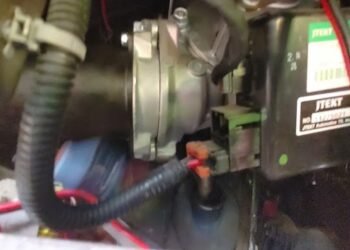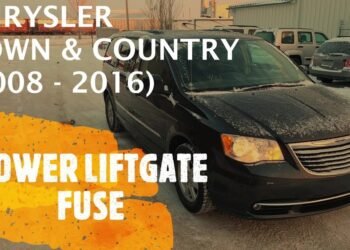If you’ve recently installed a leveling kit on your Toyota Tundra, you might have noticed some unexpected issues creeping in. While leveling kits can improve your truck’s stance and allow for larger tires, they sometimes bring along problems that affect ride quality, handling, and even safety.
You’re probably wondering what these problems are, how they happen, and what you can do to fix or avoid them. You’ll get a clear look at the most common Toyota Tundra leveling kit problems, so you can make smart decisions for your truck and enjoy every mile with confidence.
Keep reading to learn what to watch out for and how to keep your Tundra running smoothly after a lift.
Common Leveling Kit Problems
Installing a leveling kit on your Toyota Tundra helps balance the truck’s height front to back. This modification often improves the vehicle’s stance and allows for larger tires. Despite the benefits, some problems can arise after installation. These common issues affect performance and comfort.
Understanding these problems helps you make better decisions about your leveling kit choice and maintenance.
Ride Quality Issues
Leveling kits can change the truck’s suspension geometry. This often results in a rougher ride. You may feel more bumps and vibrations on uneven roads. The factory shock absorbers might not work well with the new height. Poor ride quality reduces driving comfort, especially on long trips.
Steering And Handling Concerns
Raising the front of the Tundra can affect steering response. The truck might feel less stable during turns or quick maneuvers. Some drivers notice increased body roll and reduced control. In some cases, the alignment may go off, causing uneven tire wear. These issues can make driving less safe and more tiring.
Increased Wear And Tear
Higher suspension stress can cause faster wear on parts. Components like ball joints, tie rods, and bushings may degrade sooner. Tires may wear unevenly or faster due to changed alignment angles. Suspension parts might need more frequent checks and replacements. This leads to higher maintenance costs over time.
Fuel Economy Impact
Adding a leveling kit often increases the truck’s height and weight slightly. This can reduce aerodynamic efficiency. The engine may work harder, especially with larger tires. As a result, fuel consumption can rise noticeably. Drivers often see lower miles per gallon after installing a leveling kit.

Credit: news.turn14.com
Installation Challenges
Installing a leveling kit on a Toyota Tundra can bring several challenges. These hurdles often come from the kit itself or the vehicle’s existing setup. Understanding common installation problems can help avoid costly mistakes and ensure the truck performs well after the upgrade.
Incorrect Fitment
One major challenge is incorrect fitment. Not all leveling kits are made to perfectly match every Tundra model or year. A kit that does not fit right can cause stress on suspension parts. It may lead to uneven tire wear or damage over time. Checking the kit’s specifications against your truck is essential before installation.
Alignment Problems
Alignment issues often arise after installing a leveling kit. Raising the front of the truck changes the suspension geometry. This change can throw off wheel alignment angles. Poor alignment causes the vehicle to pull to one side or the other. It also speeds up tire wear and reduces fuel efficiency. Getting a professional alignment after installation is necessary to fix these problems.
Component Compatibility
Compatibility between the leveling kit and existing components is crucial. Some kits do not work well with factory shocks or brake lines. This mismatch can lead to parts rubbing or stretching beyond safe limits. In some cases, additional modifications are needed to ensure all parts work together smoothly. Always verify compatibility to avoid extra costs and installation delays.
Popular Leveling Kit Brands
Choosing the right leveling kit for your Toyota Tundra can improve its look and performance. Many brands offer different kits with unique features. Knowing the popular leveling kit brands helps you pick one that fits your needs and budget. Each brand has strengths and some known issues. Understanding these helps avoid common problems with installation and ride quality.
Rancho Level-it Kits
Rancho Level-It Kits provide a simple bolt-on lift solution. They replace factory struts with complete lift strut assemblies. This improves ride quality and vehicle height. Made in the USA, they come with a limited lifetime warranty. Many users praise Rancho kits for smooth rides and easy installation. Some report minor fitment issues but overall reliability is strong. Rancho suits those who want a balance of comfort and height.
Rough Country Kits
Rough Country offers popular leveling kits that are easy to install. They work well with larger tires and rough terrain. These kits are budget-friendly and widely available. Some users note a stiffer ride after installation. Others mention occasional noise or alignment needs. Rough Country kits are a solid choice for off-road enthusiasts wanting a quick lift. They fit well on the Tundra with minimal modifications.
Bilstein Options
Bilstein provides high-quality shock and strut leveling kits. Known for durable construction and performance, these kits improve handling. Bilstein kits often include shocks designed specifically for lifted trucks. They offer better control on and off-road. Some owners find Bilstein kits pricier but worth the cost. Installation can be straightforward but may require professional help. Bilstein suits drivers seeking a premium ride and long-term durability.
Wescott Designs
Wescott Designs focuses on custom leveling kits for the Tundra. They tailor kits for specific lift heights and driving styles. Customers appreciate the personalized service and detailed instructions. Some kits include additional hardware for better fitment. Users report excellent ride quality and improved truck stance. Wescott kits may cost more but offer precise engineering. Ideal for Tundra owners wanting a custom, well-fitted leveling solution.
Choosing The Right Kit
Choosing the right leveling kit for your Toyota Tundra is key to avoid common problems. The wrong kit can cause issues like poor ride quality or fitment troubles. Focus on your needs and preferences before making a decision. Consider your budget, driving style, and how you plan to use your truck. This helps find a kit that suits you best and keeps your Tundra running smoothly.
Budget Considerations
Leveling kits come in many price ranges. Higher prices often mean better parts and durability. Cheaper kits might save money upfront but cause problems later. Think about how much you want to spend. Factor in installation costs and any extra parts you might need. Balance cost with quality to get the best value. Spending a bit more can prevent costly repairs down the road.
Ride Comfort Vs Off-road Performance
Some kits focus on a smooth ride on paved roads. Others improve off-road ability by adding more lift and stronger components. Decide what matters most for your driving. A comfort-focused kit suits daily driving and highway use. Off-road kits handle rough terrain better but may feel stiff on streets. Pick a kit that matches your main use to avoid disappointment.
Lift Height And Vehicle Use
The height of the lift affects how your Tundra looks and performs. Small lifts keep the truck close to stock height and improve tire clearance. Taller lifts allow bigger tires and better off-road clearance. Choose a lift height that fits your needs. Consider local laws and garage space. Also, think about how often you will use your truck off-road versus city driving.
Solutions And Maintenance Tips
Solving Toyota Tundra leveling kit problems starts with proper care and maintenance. Small issues can become big if ignored. Use effective solutions to keep your truck running smoothly. Follow these tips to maintain your leveling kit and avoid common troubles.
Proper Installation Practices
Correct installation is key to avoid problems. Use the right tools and follow the kit’s instructions closely. Tighten bolts to the recommended torque. Avoid shortcuts that may damage parts. If unsure, hire a professional mechanic. Proper installation reduces wear and improves safety.
Regular Alignment Checks
Check wheel alignment after installing a leveling kit. Misalignment causes uneven tire wear and poor handling. Visit a trusted shop for alignment every 6,000 miles or after rough driving. Proper alignment enhances driving comfort and tire life. Keep your Tundra stable and safe on the road.
Component Upgrades
Upgrade suspension parts for better performance. Higher-quality shocks and struts reduce noise and improve ride quality. Reinforced control arms and sway bar links increase durability. Use parts designed for your Tundra model and leveling kit. Upgrades prevent damage and improve off-road capability.
Addressing Noise And Vibration
Noise and vibration often signal loose or worn parts. Inspect suspension and steering components regularly. Replace bushings or mounts if they show wear. Lubricate moving parts to reduce friction and noise. Tighten bolts and fasteners to eliminate rattles. These steps ensure a quiet, smooth ride.
Credit: www.tundrasolutions.com
Toyota Tundra Specific Issues
The Toyota Tundra is a popular truck known for its strength and reliability. Still, some specific problems can arise after installing a leveling kit. These issues can affect daily driving comfort and the truck’s overall performance.
Understanding these common problems helps owners prepare and find the right solutions. Below are some key areas where owners often notice trouble.
Infotainment Glitches
Some Tundra owners report issues with the infotainment system after leveling kit installation. The screen may freeze or reboot unexpectedly. Bluetooth connections might drop or fail to pair correctly. These glitches can disrupt navigation and music playback. Software updates sometimes fix these bugs but may not solve all problems.
Wind Noise And Rattles
After leveling the front end, many drivers hear extra wind noise. This noise often comes from changes in the truck’s stance or gaps around doors and windows. Small rattles may develop in the cabin, especially at higher speeds. These sounds can be annoying and reduce ride comfort. Checking seals and tightening panels can help reduce noise.
Engine And Mechanical Concerns
Leveling kits can affect engine and mechanical parts too. Some owners notice vibrations or unusual sounds from the drivetrain. Suspension and steering components may wear faster if not installed properly. Fuel economy can drop slightly due to altered aerodynamics. Regular maintenance and proper installation reduce these risks.

Credit: www.reddit.com
Frequently Asked Questions
What Is The Best Leveling Kit For A Toyota Tundra?
The best leveling kit for a Toyota Tundra is the Rancho Level-It kit. It offers quality, easy installation, and improved ride comfort.
What Problems Can A Leveling Kit Cause?
A leveling kit can reduce fuel efficiency, cause steering wobble, increase front-end wear, and lower driver visibility.
What Is The Most Common Problem With Toyota Tundra?
The most common problem with Toyota Tundra is engine issues caused by manufacturing defects. Infotainment glitches and wind noise also occur frequently.
Should I Level My Tundra?
Leveling your Toyota Tundra improves front-end height and appearance. It enhances tire clearance but may slightly reduce fuel efficiency and increase wear. Choose quality kits for better ride and fewer problems.
What Are Common Problems With Toyota Tundra Leveling Kits?
Common issues include uneven ride height, noise, and premature wear on suspension parts.
Conclusion
Installing a Toyota Tundra leveling kit can improve your truck’s look and performance. Yet, some common problems may arise, like rough rides or alignment issues. Regular checks and proper installation help avoid these troubles. Choose quality kits to ensure better fit and durability.
Stay informed and monitor your truck’s handling after installation. This way, you enjoy the benefits without unwanted surprises. Keep your Tundra running smooth and safe on every drive.
















